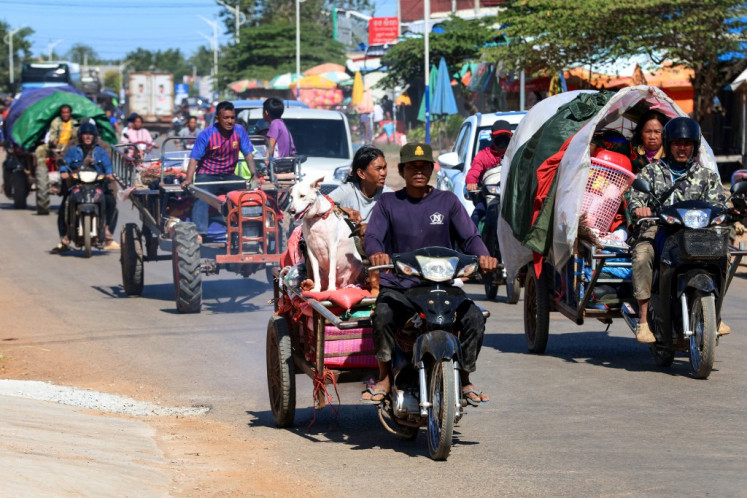Popular Reads
Top Results
Can't find what you're looking for?
View all search resultsPopular Reads
Top Results
Can't find what you're looking for?
View all search resultsGendarussa not popular in Papua
Ubiquitous: Often used as hedgerows in many villages across Indonesia, the gendarussa plant has long been used as a remedy for anxiety, human influenza, skin diseases and arthritis
Change text size
Gift Premium Articles
to Anyone
U
span class="caption" style="width: 498px;">Ubiquitous: Often used as hedgerows in many villages across Indonesia, the gendarussa plant has long been used as a remedy for anxiety, human influenza, skin diseases and arthritis.
Hermina was surprised to find out that the shrub fencing around her home in Kotaraja, Jayapura, could be made into male contraceptive pills.
'I didn't know that. I didn't know that is has curative uses whatsoever. I grow it because it is easy to trim,' she said.
The information about the gendarussa plant with its contraceptive use for men was first heard about in 1992 when a resident of Kanda, located some 10 kilometers from Sentani, Jayapura, suggested that the province's National Population and Family Planning Board (BKKBN) office develop it.
In the anonymous proposal, the resident explained the plant's dried leaves should be spread on beds, which had already been covered with banana and coconut leaves.
It said the dried leaves should stick to the body of the user during intercourse to be effective.
'We didn't look further into the proposal because, from the description of it, it would be difficult to prove,' said the office's staffer Agus Fauzi.
He said the proposal's sender also mentioned that the users were mostly married men who had not paid their wives' dowries.
Surabaya-based Airlangga University researcher Bambang Prajogo Eko Wardojo said that he only had secondary information about the plant's function.
In the story he got, the ethnic group in the remote area of Sentani consumed the water after boiling the plant's leaves 30 minutes prior to intercourse for the contraceptive effect to kick in.

The plant, he said, had become a panacea for married men in the ethnic group who had yet to pay off their dowries.
In their culture, he added, a man was not allowed to get his wife pregnant before paying the dowry in full.
However, only a small bunch of gendarussa shrubs could be found in Kanda.
'None of us here know that story. We don't use gendarussa for anything. As far as we know it comes from another place, it did not originate here. Our ancestors used to plant certain shrubs to expel evil spirits, but as we now embrace Christianity the plant no longer exists here,' said Jeffri, a Kanda resident.
A senior researcher at Papua's Cenderawasih University, Made Budi, said that none of the researchers in the province had analyzed the plant.
Made, the lead researcher into buah merah (red fruit) that is said to have the potential to cure HIV, said that gendarussa was not popular in Papua.
'The use of gendarussa could only have been by an isolated family, a secret family recipe that was not
for public sharing. Even if there is someone in Kanda who has the knowledge, it does not necessarily mean everyone else does.'










